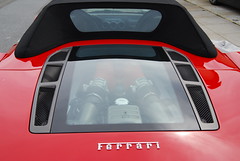SixPapaCharlie
May the force be with you
- Joined
- Aug 8, 2013
- Messages
- 16,068
- Display Name
Display name:
Sixer
Got to go up in one over the weekend.
One question. How do they re pack the chutes.
There is no hidden hatch where they get to the chute. It appears that when that thing fires, it breaks through the surface and the cutter lines rip away chunks of the plane as they deploy.
When they repack the chute and replace those cutters, do they break through the plane and rebuild / repaint the plane?
How does it work?
One question. How do they re pack the chutes.
There is no hidden hatch where they get to the chute. It appears that when that thing fires, it breaks through the surface and the cutter lines rip away chunks of the plane as they deploy.
When they repack the chute and replace those cutters, do they break through the plane and rebuild / repaint the plane?
How does it work?







 ........
........